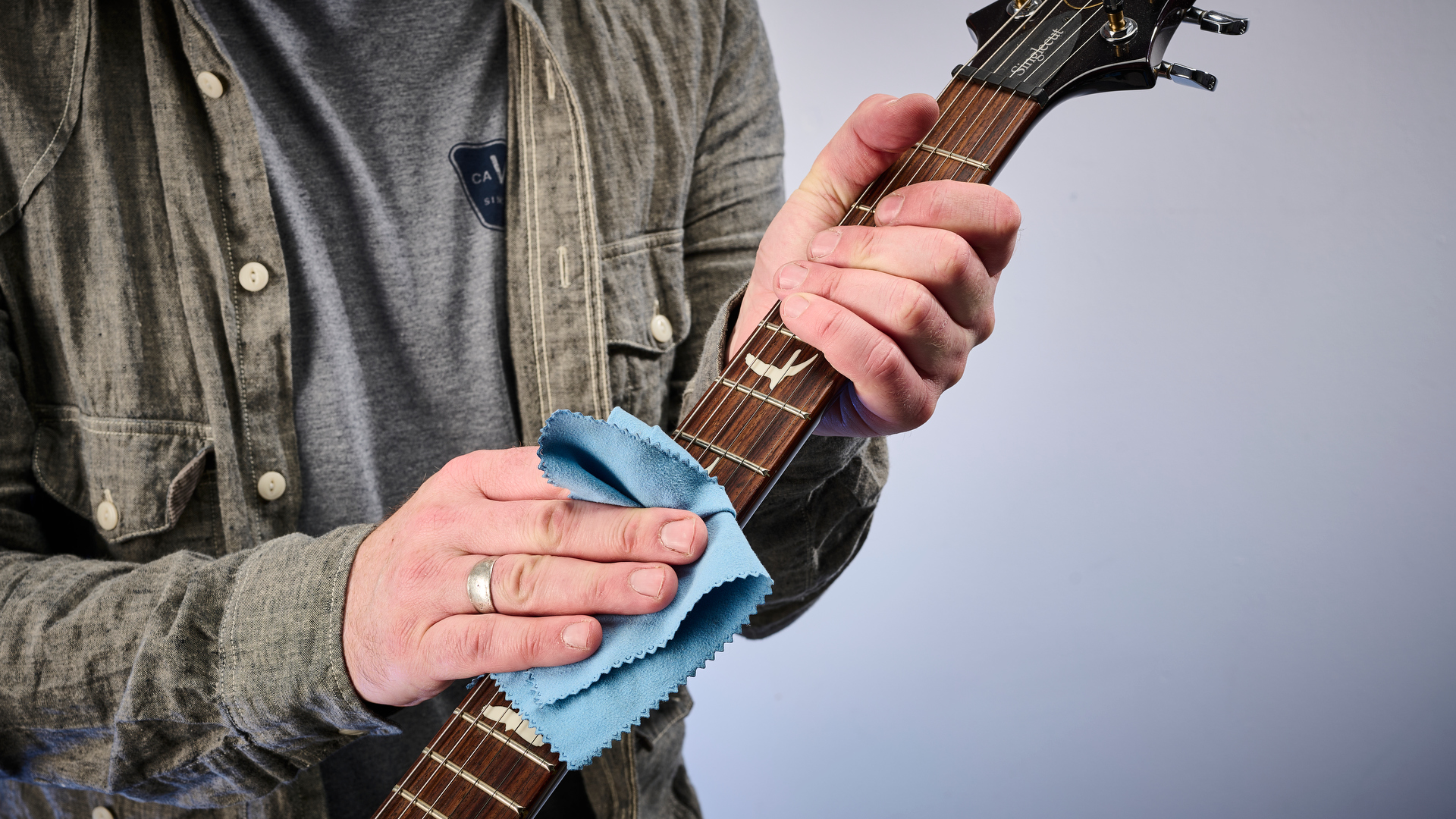
I will admit that unless it's a review guitar I'm polishing dust off ahead of it being photographed, I'm not the best at keeping my own instruments looking their best. I wager it's a job many of us guitarists and bassists put off – or even avoid entirely – but it's surprising how much of a difference it makes. When it's done right.
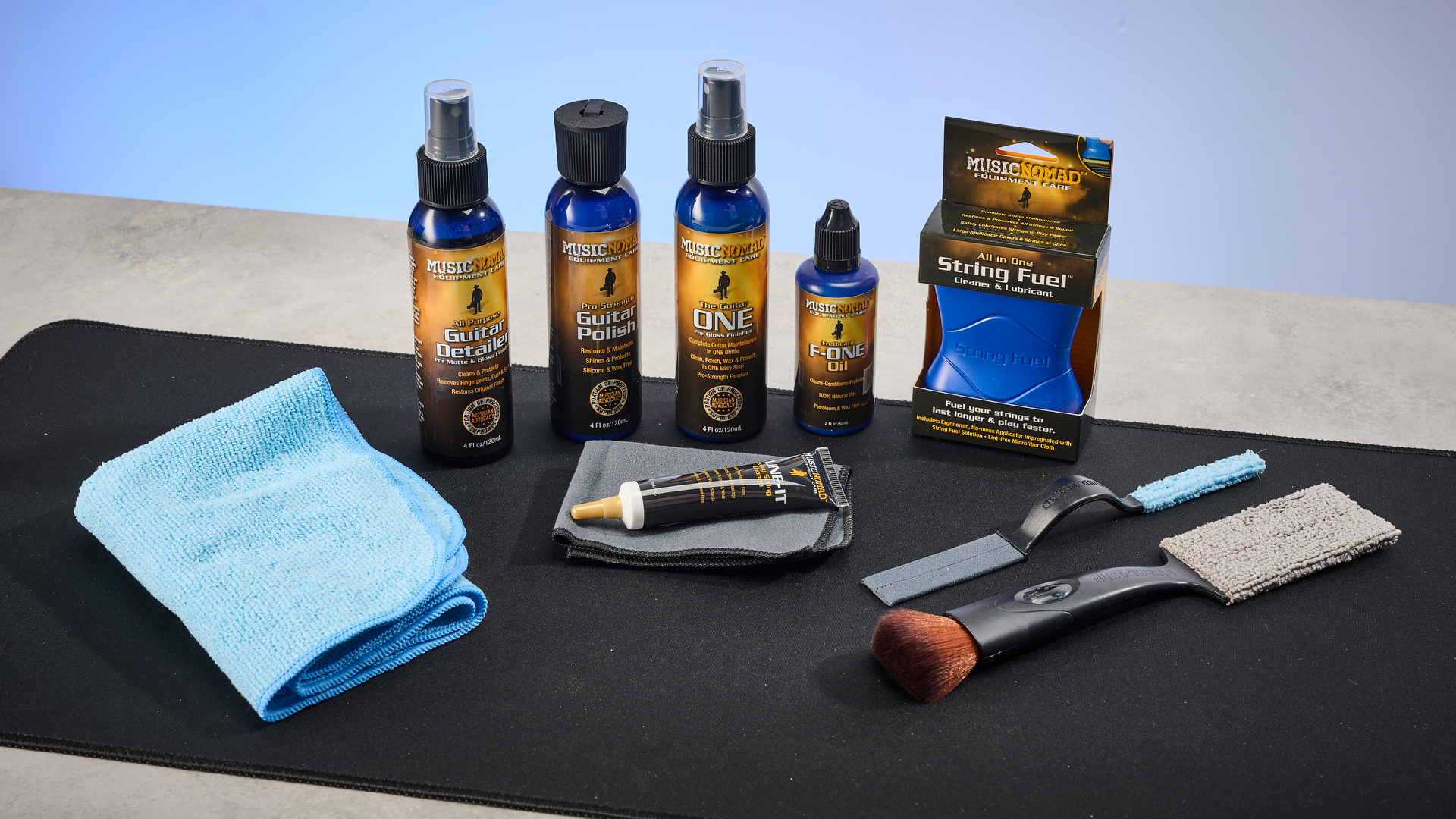
As part of a new guitar maintenance series, our friends at MusicNomad have provided us with some of their most popular products to try and we'll be putting them through their paces in our step-by-step guides. We've noticed on our travels that MusicNomad is a brand that's consistently popular with pro guitar techs, so that's a great recommendation in itself.
Let's get started with some guitar TLC!
The right kind of cloth for the job
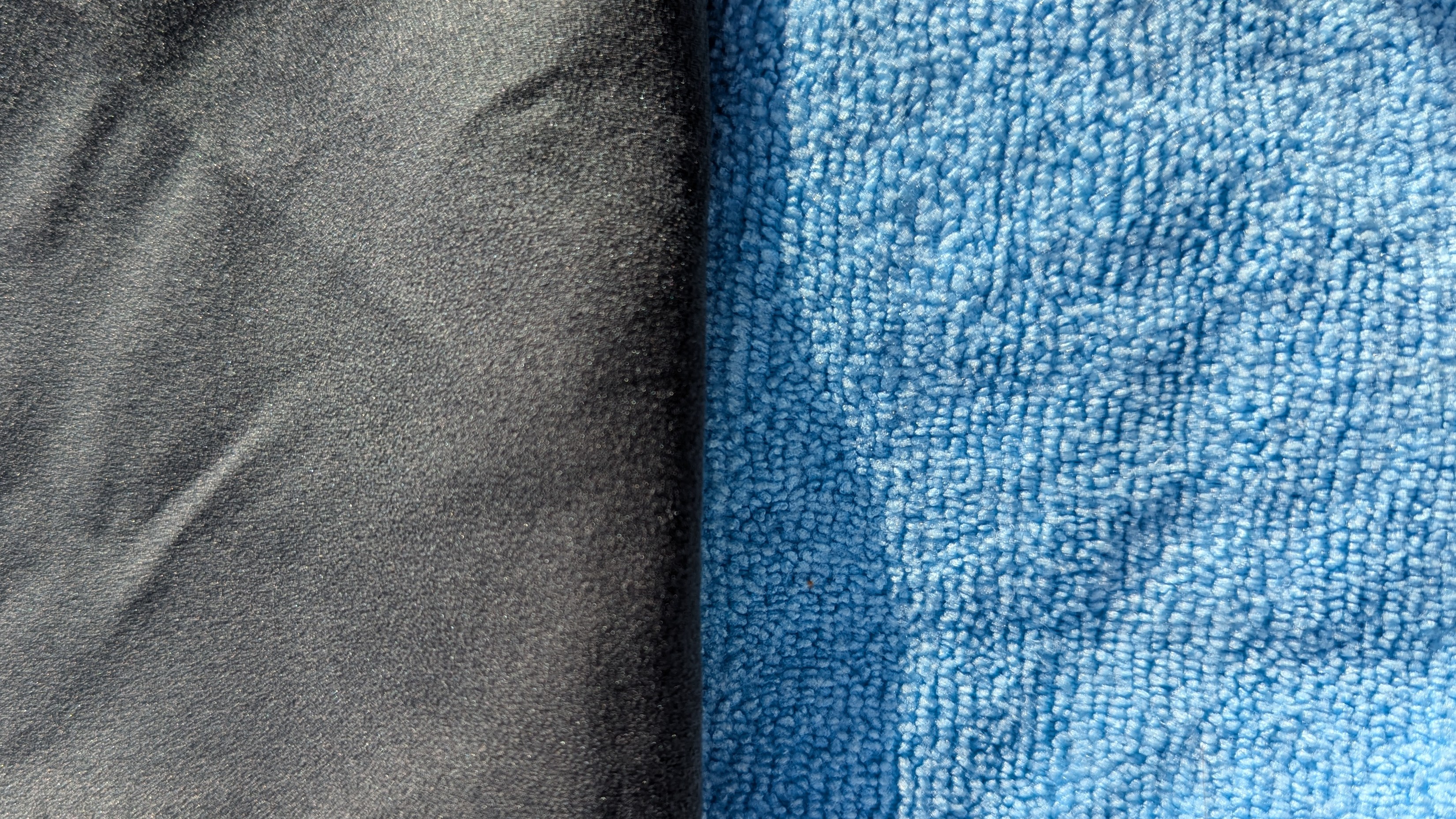
A cloth is a cloth, right? When it comes to guitars it's a good idea to have two types on hand for most of the maintenance jobs we'll be doing in this series. Flannel-type clothes are often popular for cleaning but as they're usually cotton, the fibres can shed onto your guitar. Lint-free cloth is the best way to go and two different types can deal with two types of application.
Suede-type and higher pile microfibre cloths are what we're using here, available separately from MusicNomad or as part of its Premium Guitar Care System kit, alongside Guitar One maintenance spray, Guitar Polish and F-One oil for fretboards. The MusicNomad cloths are specially designed to minimise unwanted contact with your guitar and don't have stitching on the outside edge so only the soft material will touch your finish.
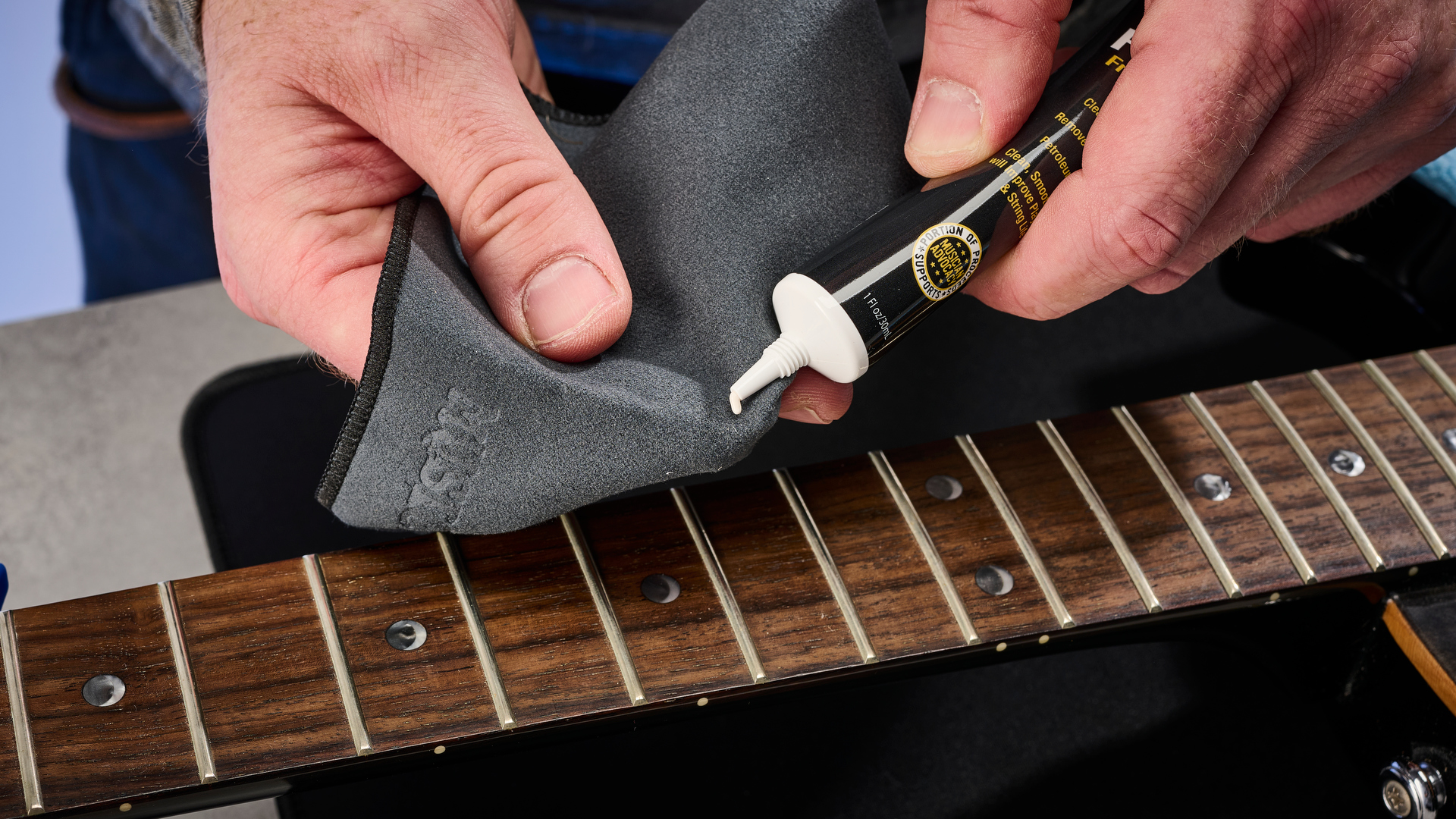
The suede lower pile cloth (dark grey) is best for applying conditioning – using it to apply a solution from the bottle to the body of the guitar. The material won't absorb too much of the solution before you can apply it. So, use for:
• Best for applying fretboard conditioning oils
• Also applying paste polishes to the guitar finish after cleaning the surface with the higher pile cloth.
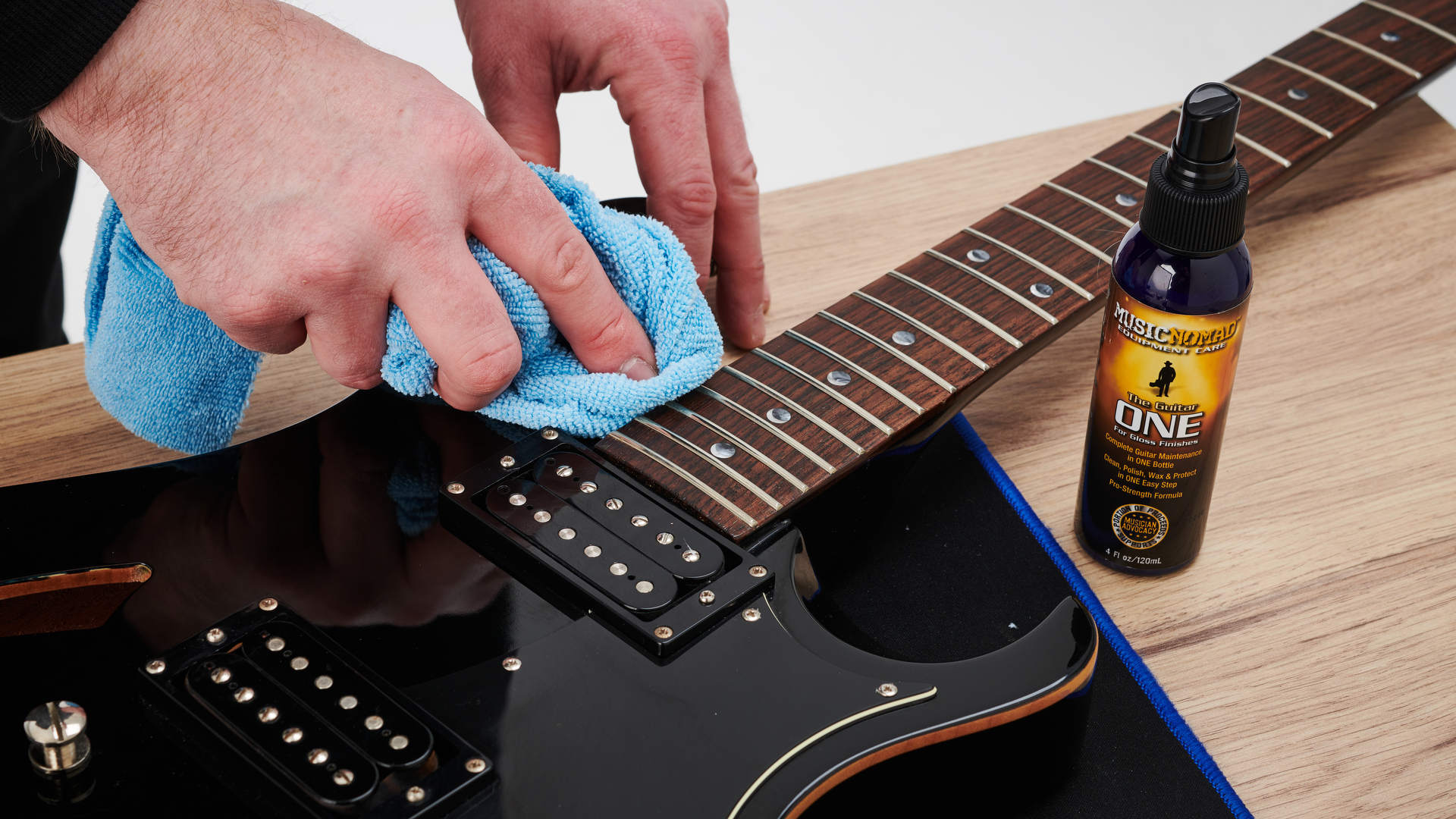
The higher-pile microfibre cloth (blue) is best for dusting surfaces and removing unwanted material, as it can catch it within the thicker material better. It's also best for transferring spray cleaners.
Want all the hottest music and gear news, reviews, deals, features and more, direct to your inbox? Sign up here.
• Good for applying liquid cleaners
• Use for removing dust from guitars before applying cleaner
• Ideal for final stage of a paste polish clean
Cleaning a high-gloss guitar finish
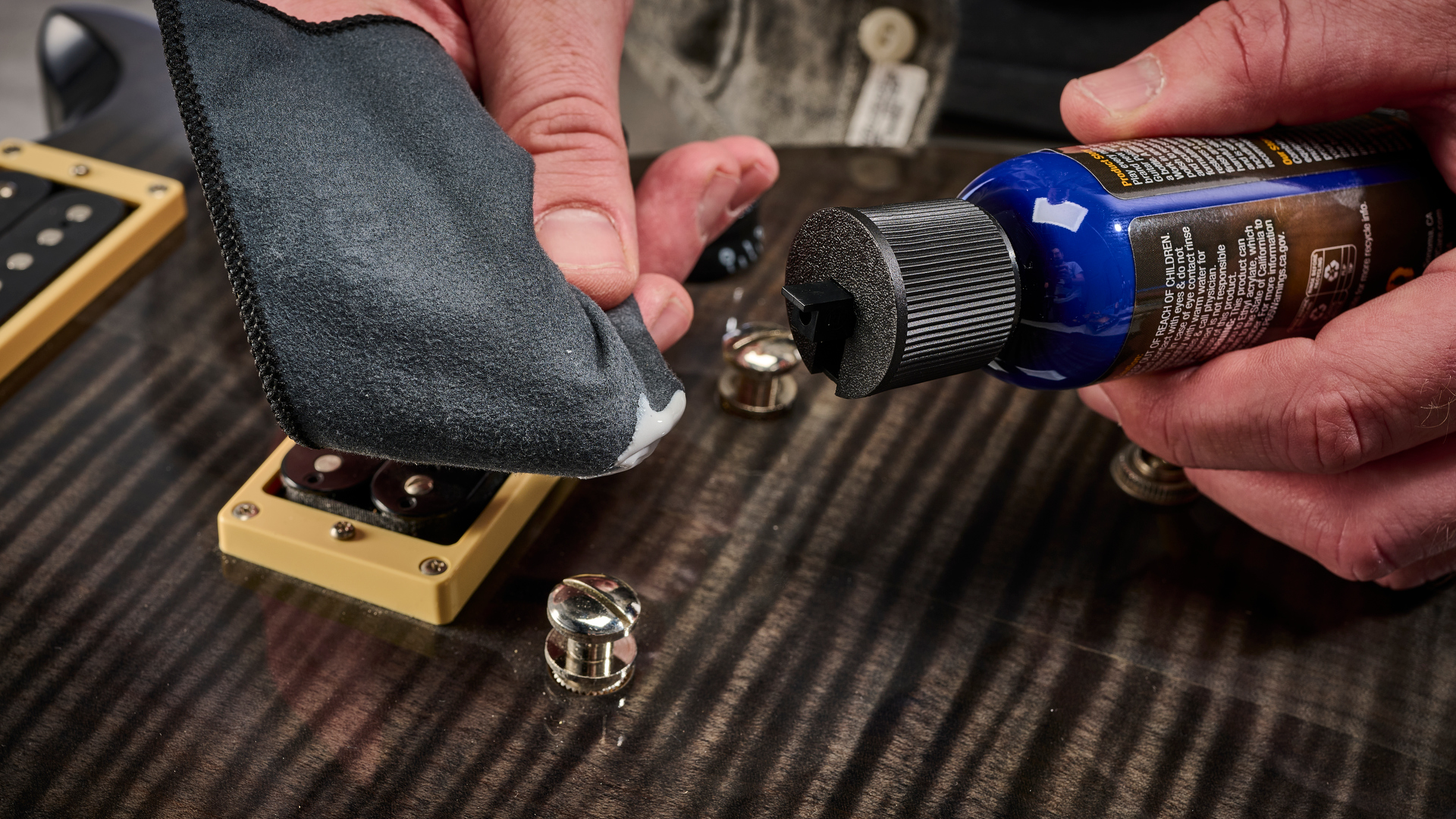
If you want to bring the shine back to your guitar's gloss finish, start by cleaning off the dust off the body with sweeps using the higher pile microfibre cloth. Dirt that can be picked up on the body is often the cause of small scratches and swirls, so it's important to remove that first.
There are a lot of guitar cleaning solutions available on the market and MusicNomad's Guitar One is a great option for a regular, easy-to-use spray cleaner because it's a cleaner, polish and a wax in one. It's also safe to use on nitrocellulose finishes, and it smells pretty good too! Either spray it onto your cloth or directly on the guitar, working the solution in and removing excess with the cloth until it's smear-free.
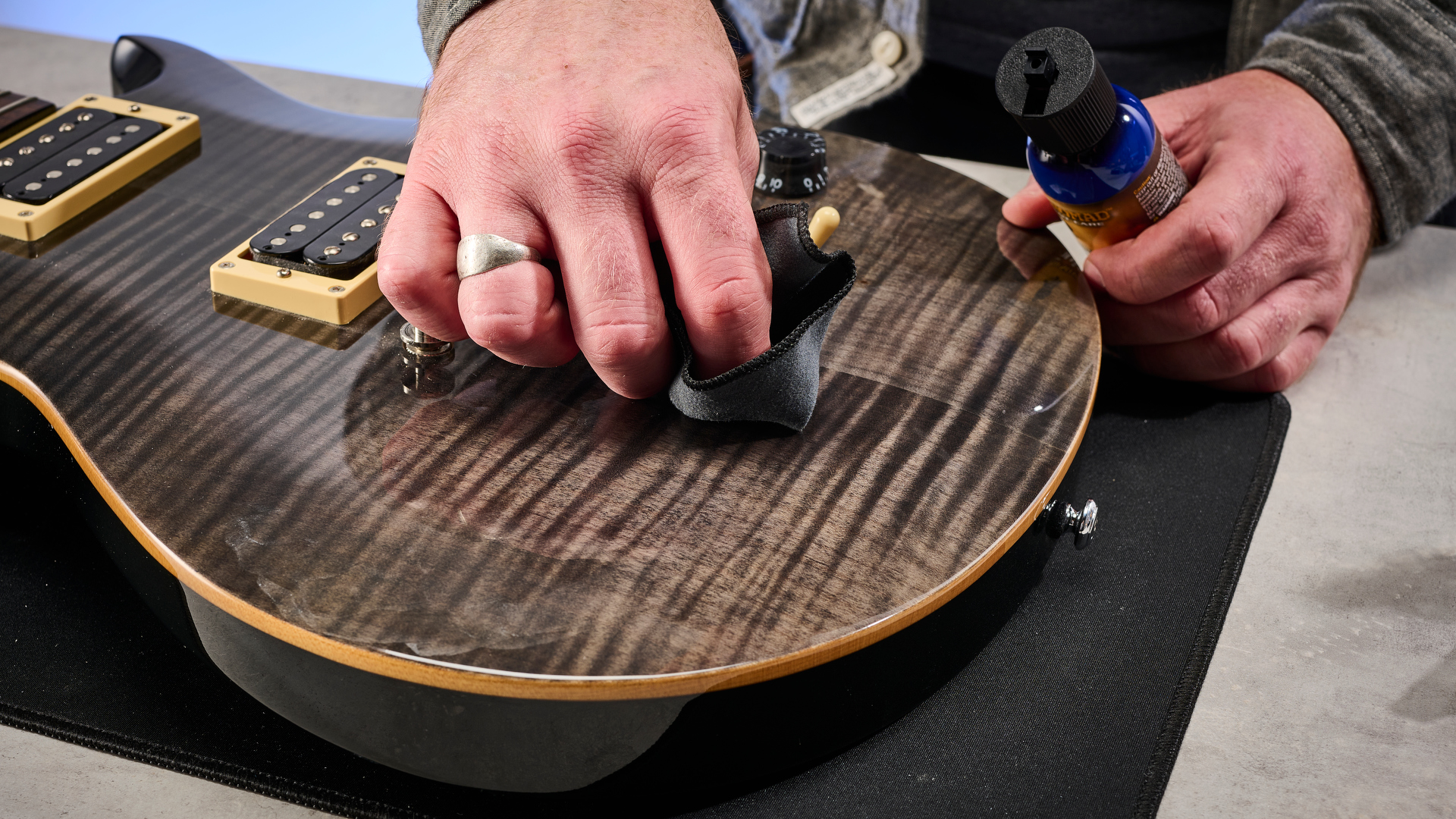
I've found the Guitar One to useful for sprucing up guitars every couple of weeks or so, but for a deeper clean with high-gloss finishes, a thicker polish that you rub in may be required. It's best to use the suede-type microfibre cloth to work this kind of polish in, then remove it and buff it out with the higher pile cloth for the last stage of the clean.
Cleaning satin finishes
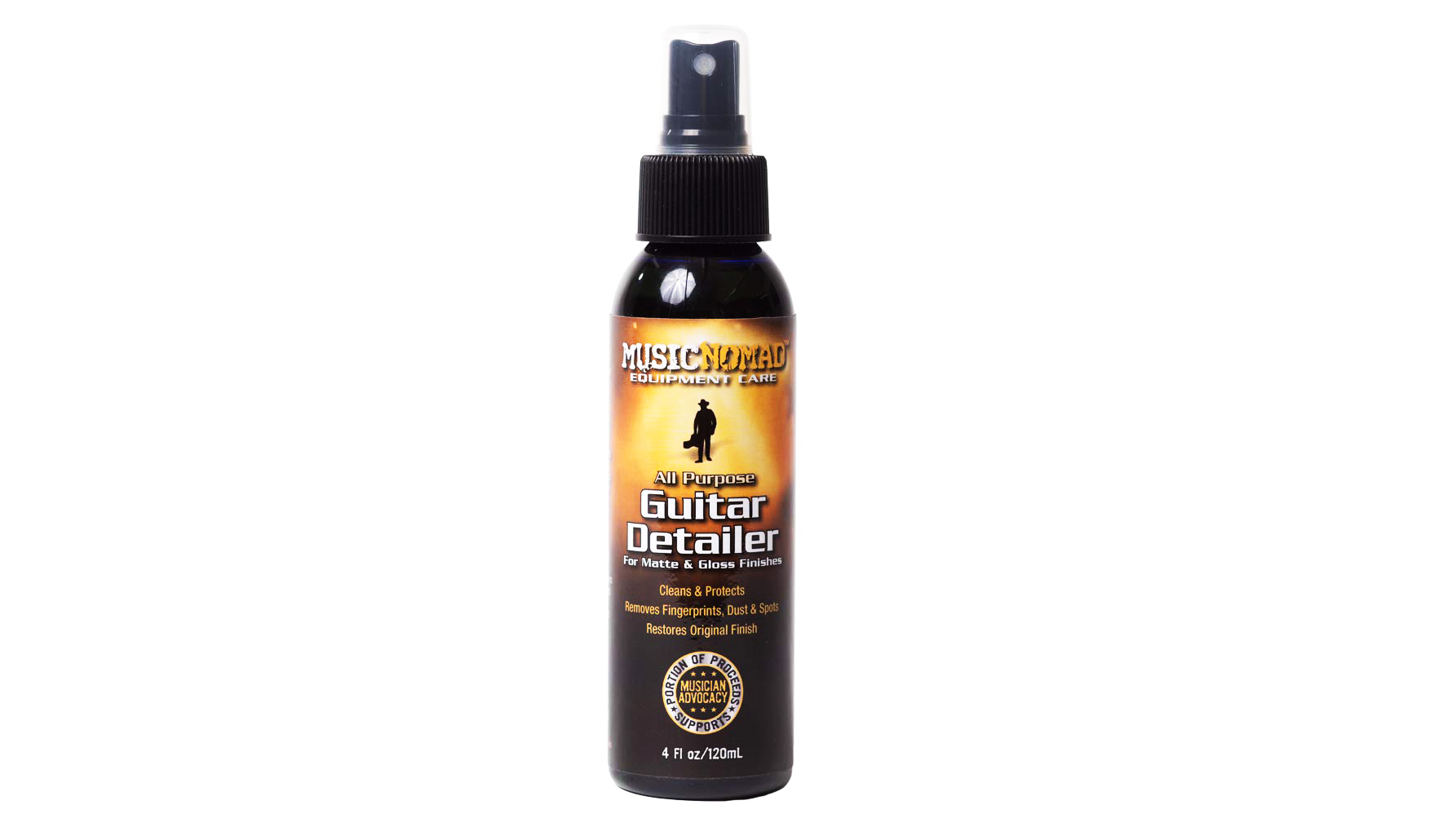
Not everyone likes to shine, and for the stealthier satin finishes, there's a great option. The Guitar Detailer from MusicNomad is suitable for satin/matte bodies as well as gloss finish guitars and necks. So if you own a mixture of finishes in your collection, this offers good value. As well as removing fingerprints and dust, it also offers helps to repel further dust and offers some UV protection too.
Like some of MusicNomad's other cleaning products, it can also be used to clean guitar hardware, which we'll get to shortly.
Other uses for your cloths
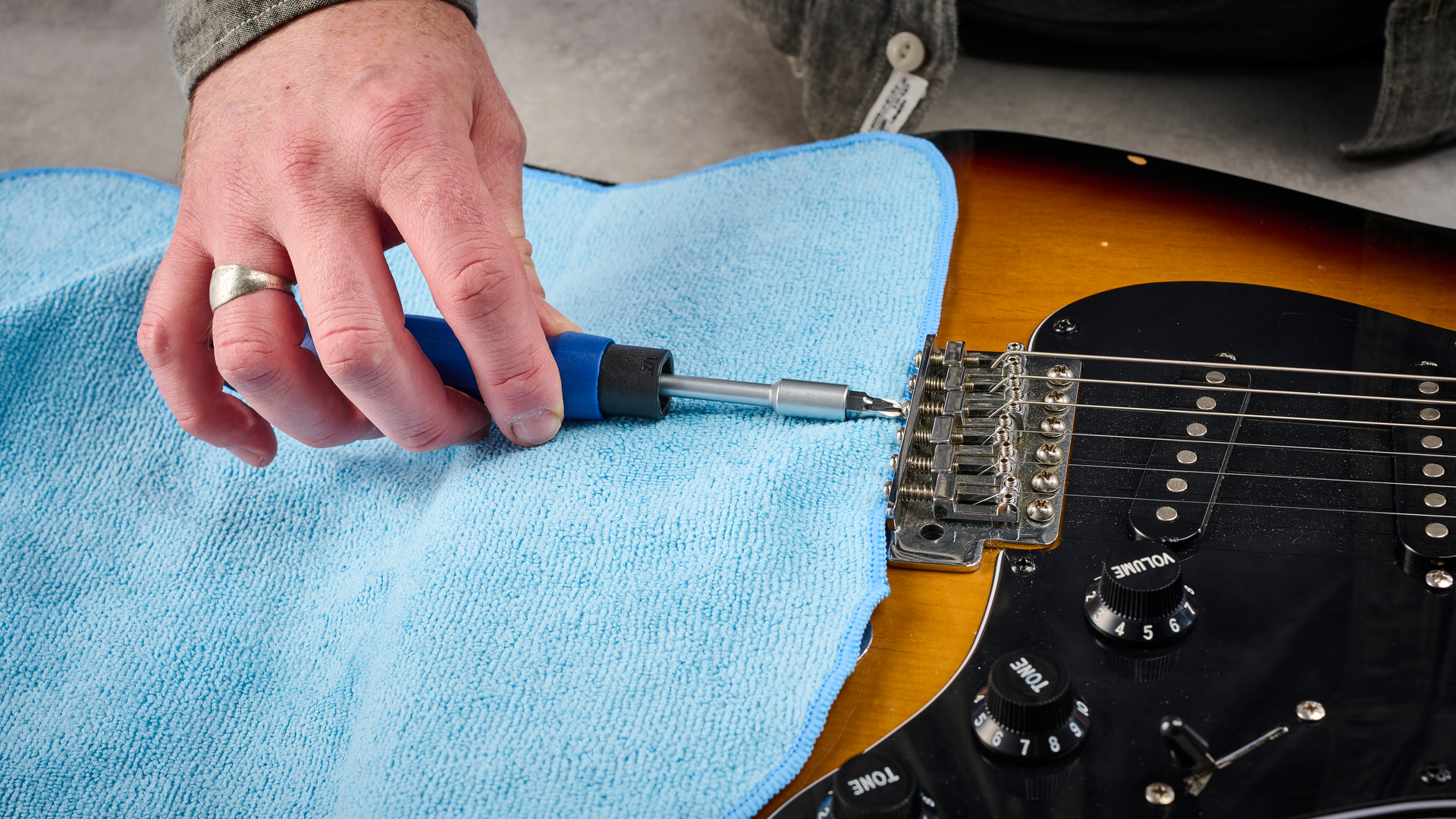
Once you've invested in a set of tools for cleaning and maintaining your guitar, you can enlist some of them in double duty. Whenever you've got a metal tool near a guitar for a maintenance or repair job, always play it safe – one slip and your guitar could get scratched. I've done it, the sinking feeling and prolonged regret linger for a long time…
So now I'll always set my higher pile cloth down under where I'm working as a guitar protector – it offers some decent cushioning. It's just not worth the risk otherwise. Unless accidental DIY relic'ing is your thing!
Cleaning guitar hardware
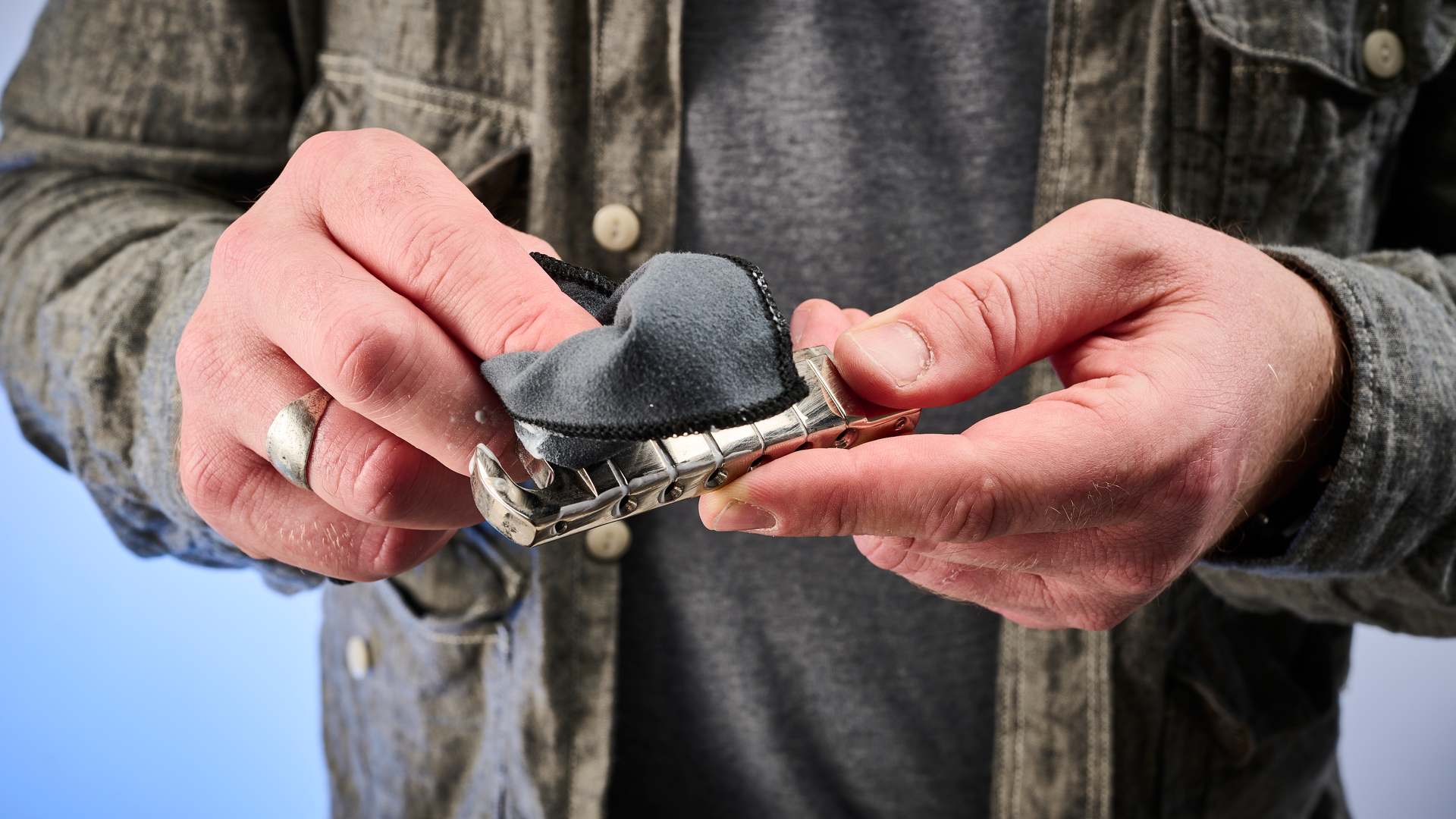
If tarnished, oxidised pickups aren't your thing, you will want to include them and other hardware in your annual guitar deep clean. It's always best to tie this in with a fretboard or fret clean (we'll get to those in later episodes) as you'll need to take the strings off to really give your guitar the clean it deserves.
Hardware can be cleaned with the same cloth and polish we've already mentioned – ideally apply it with a suede-style cloth and buff it out with the higher pile cloth, taking care not to leave any polish in crevices.
Cleaning electronics
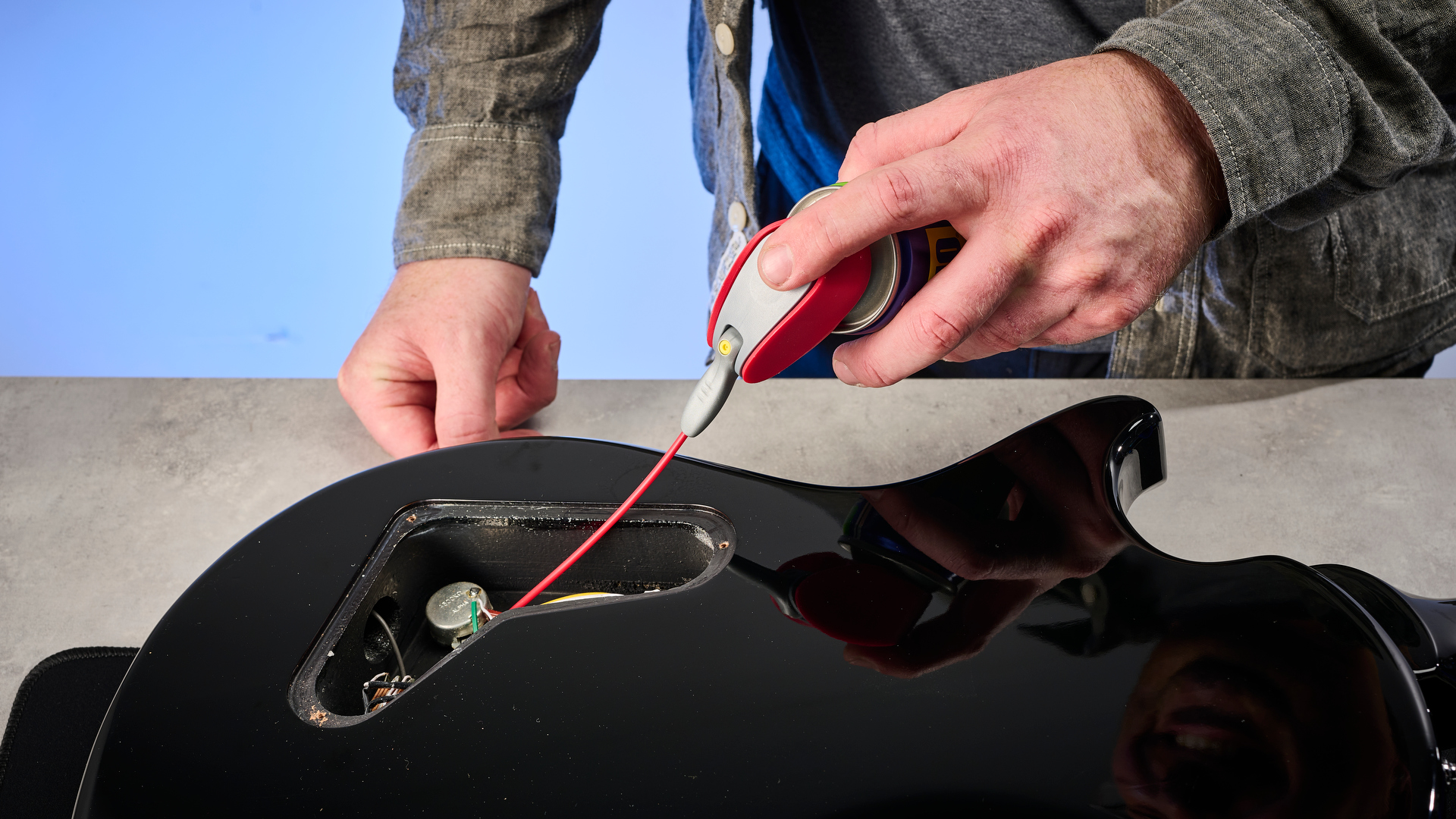
This isn't something most of us will need to do, but if you notice your volume, tone and pickup selector crackling when turn and switch them, it might help to give them a spray with electrical contact cleaner lubricant.
We're using a spray from the WD40 brand – not the famous multi-use lubricant but the electrical cleaner. It comes with a narrow stray to accuractelty spray the areas that need attention but first you'll need to unscrew the nuts securing the pots to the body so you can spray the electronics.
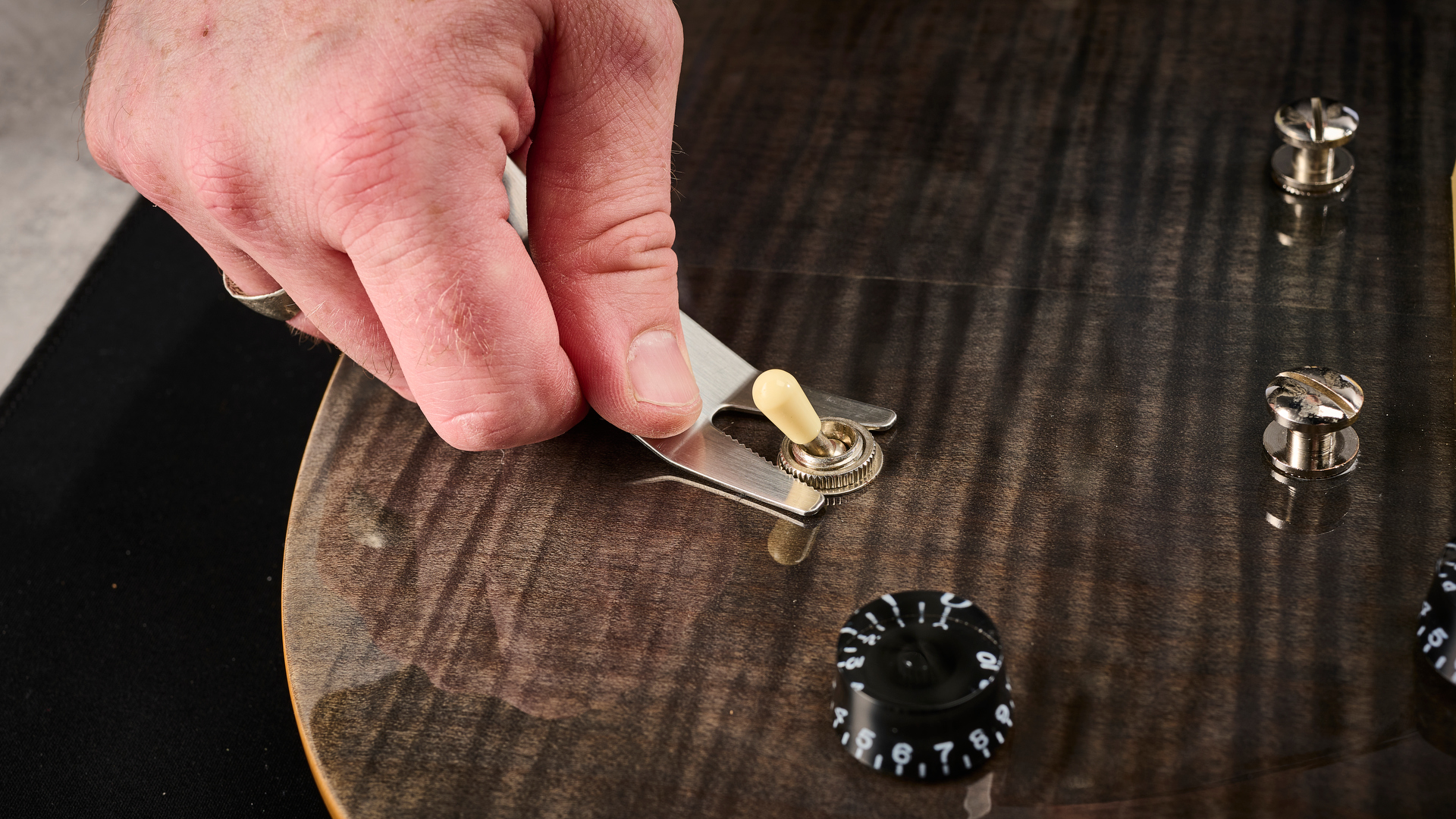
Again, your cloth could be useful for protecting the finish when you do this with a spanner but in the pic below, we're using the MusicNomad Premium Spanner Wrench that has a microfibre suede backing to help protect the guitar.
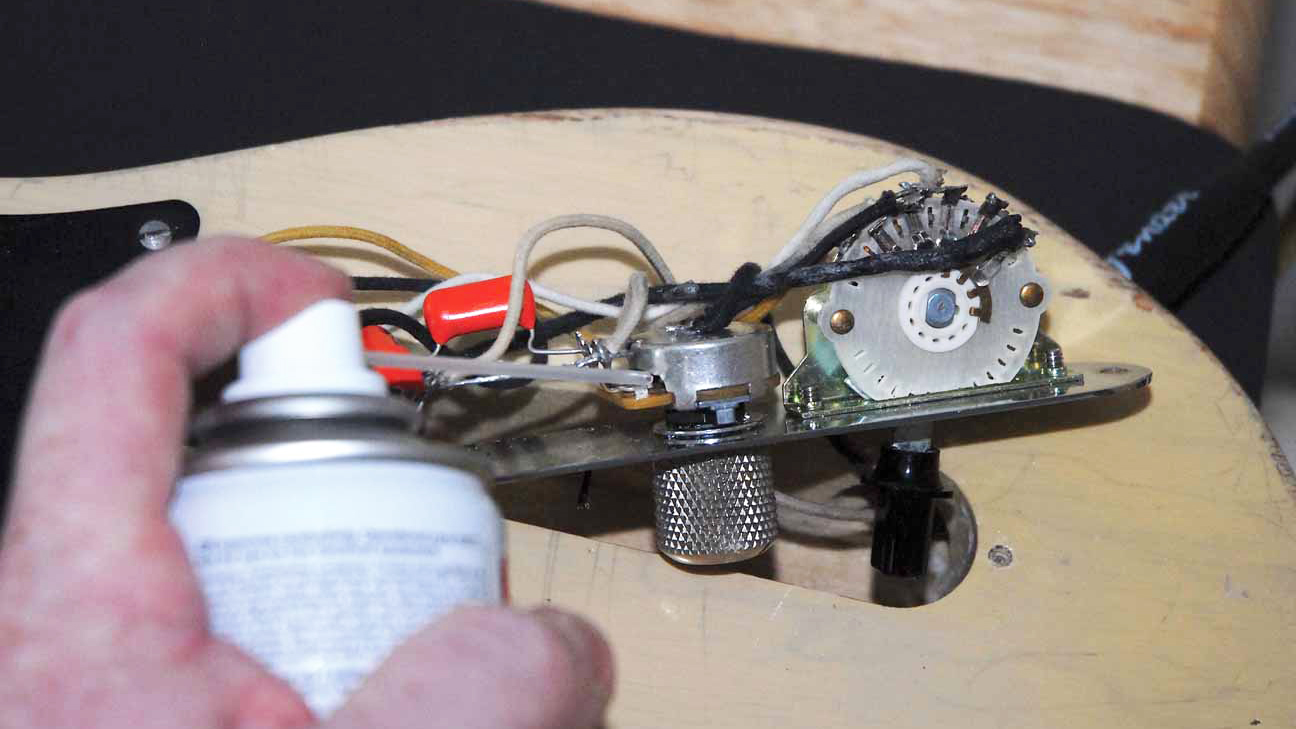
You need the contact cleaner to do its job on the inside part of the pot. For a rotary control you can gain access to the inside by spraying above the solder lugs. With a pickup selector, spray into the switch then move the selector back and forth to allow the cleaner access.
Cleaning your strings

The main factors that affect how fast our guitar strings corrode and deaden is the kind of materials they come into contact with – skin, sweat and dirt. Not matter how clean you are, it's inevitable you'll transfer these things to the strings when you play.
So ideally you'll wipe your strings down with a cloth regularly, and especially after a show or rehearsal where they may have been subject to more sweat than usual. Even if you use coated strings, it'll keep them fresh for even longer.
But there are other ways to freshen up your strings too…
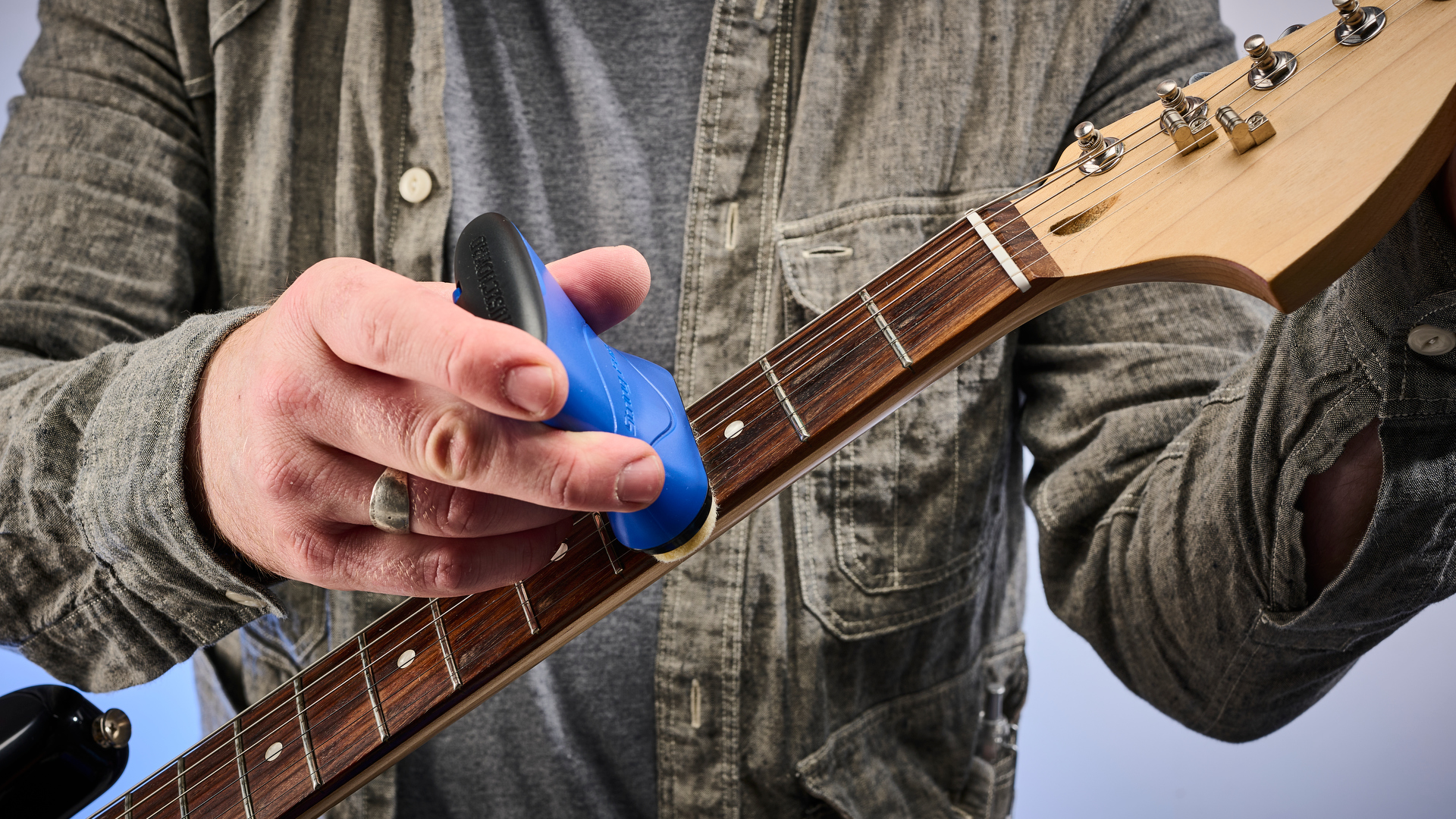
You may have heard of products like GHS Fast Fret string lubricant and cleaner and Dunlop Ultraglide 65 that aim to protect and brighten the tone of your strings while making them feel slinkier. Above we're trying out MusicNomad's String Fuel that's a little different.
It comes with a microfibre cleaning cloth for wiping down your strings that can be stored in a handy compartment an applicator for the String Fuel itself. This is a blend of naturally occurring oils with 'premium quality mineral oils' that clean and protect your strings while helping to reduce finger noises – especially useful for recording with an acoustic guitar.
Dusting hard to reach parts

Guitar attract dust – especially if you don't keep yours in a case when not in use. And there are a few places where the dust will build. Between the tuners, pickups and under the area between the bridge and pickup especially. Running a microfibre cloth can pick up some of the unwanted debris, but that's especially awkward around the tuning pegs.
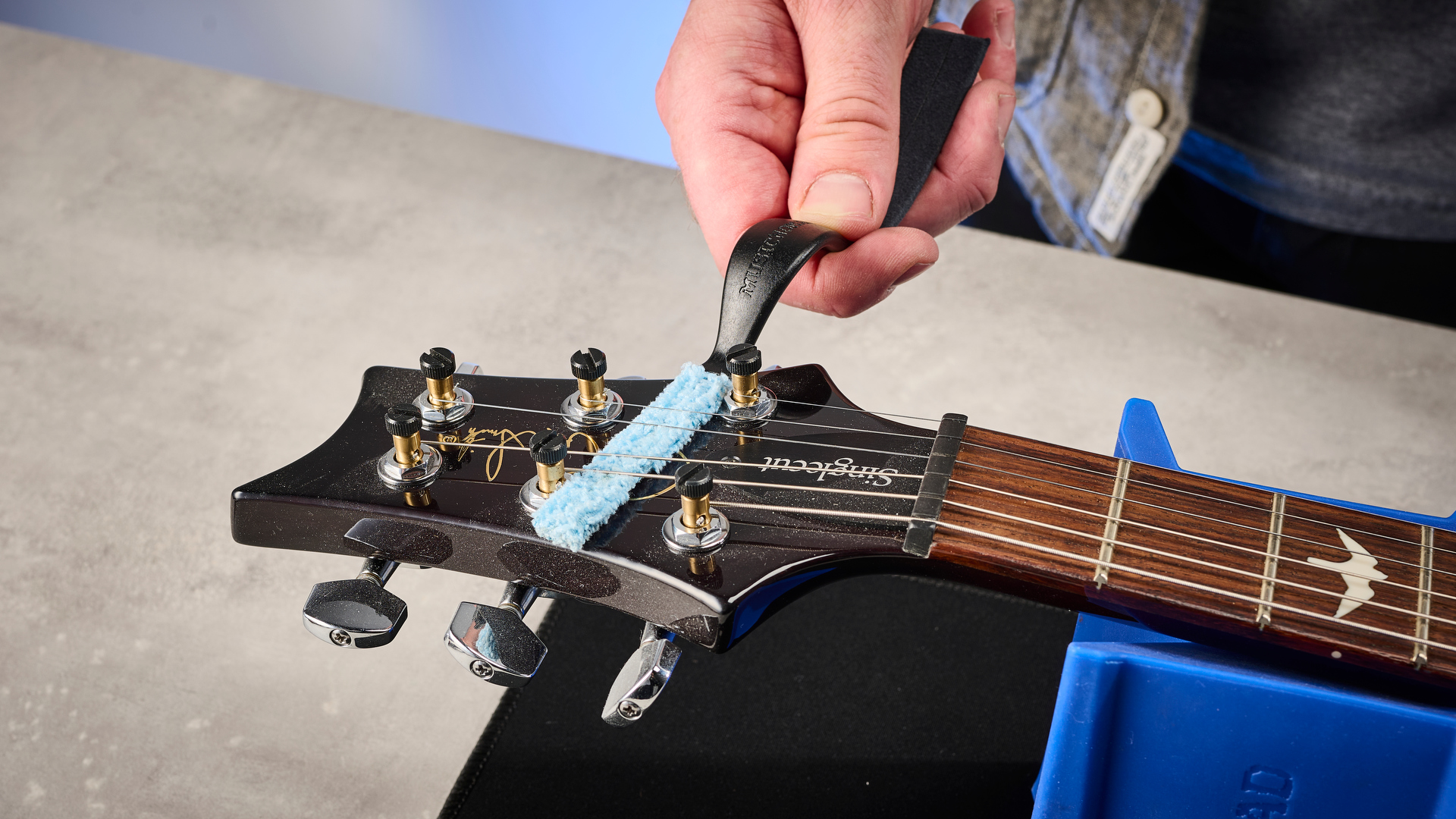
I'll be honest, I thought The Original Nomad Tool and The Nomad Slim set that MusicNomad sent might be a niche item at first. I was wrong about that – I kept using them on the guitars we were reviewing, and some of my own guitars. Because the dust nests on guitars relentlessly and these tools are just so easy to use so I kept them on hand.
The Nomad Tool even has a microfibre pad for cleaning guitar strings and under them too, plus a brush for cleaning around guitar controls. Meanwhile, the Nomad Slim is a perfect size for getting between those tuning pegs.
- For more information on the MusicNomad range of guitar tools, cleaning products and more check out musicnomadcare.com, Thomann and Sweetwater

Rob is the Reviews Editor for GuitarWorld.com and MusicRadar guitars, so spends most of his waking hours (and beyond) thinking about and trying the latest gear while making sure our reviews team is giving you thorough and honest tests of it. He's worked for guitar mags and sites as a writer and editor for nearly 20 years but still winces at the thought of restringing anything with a Floyd Rose.